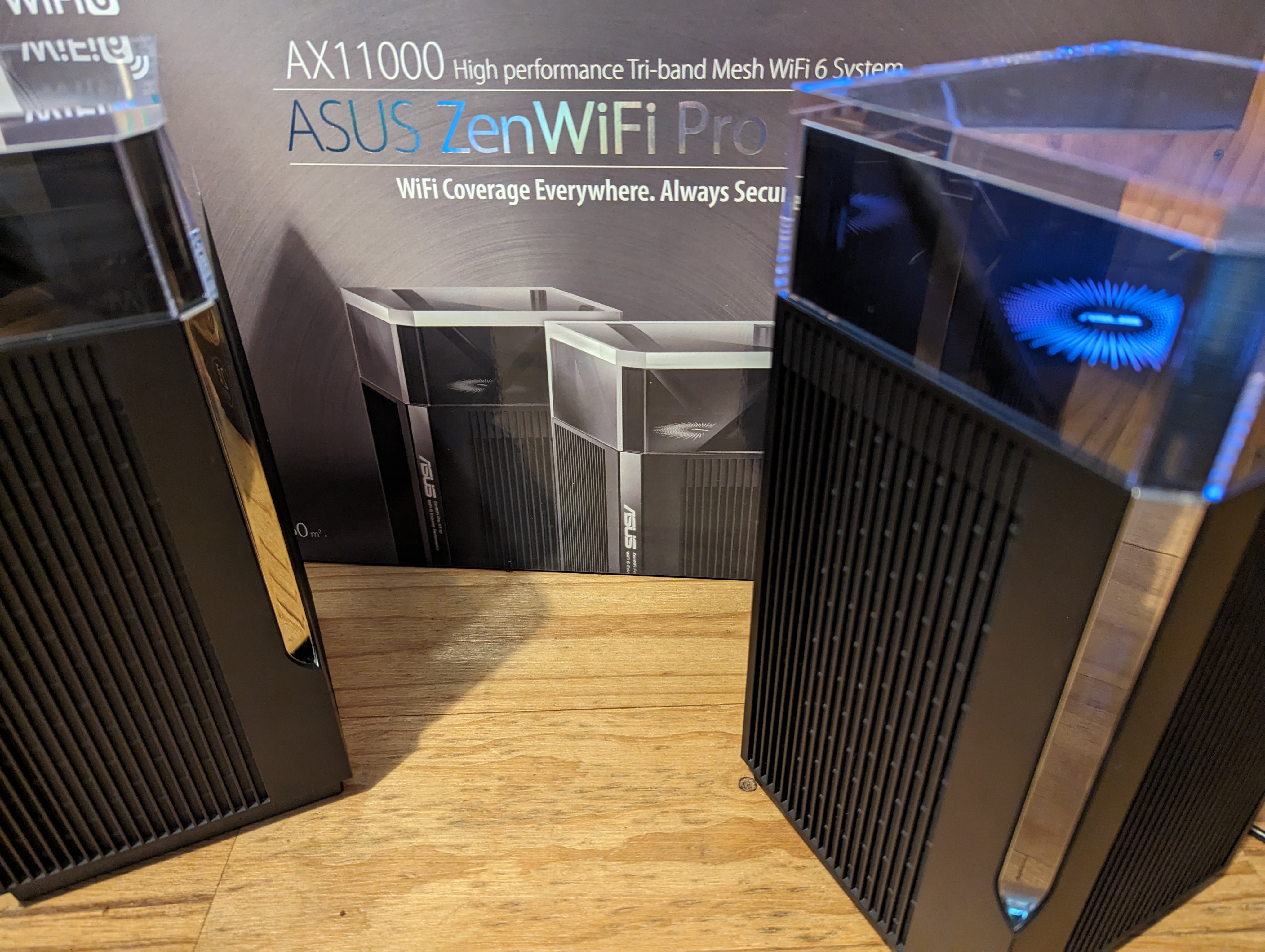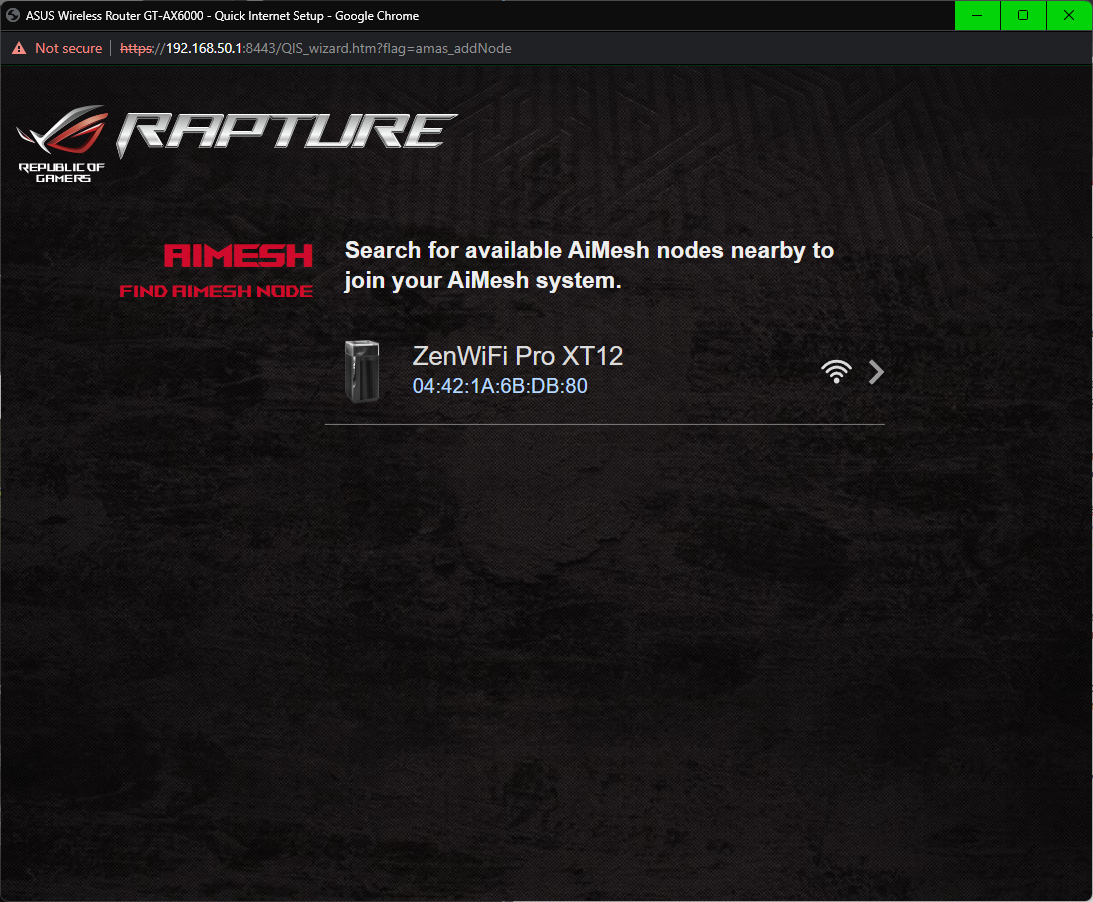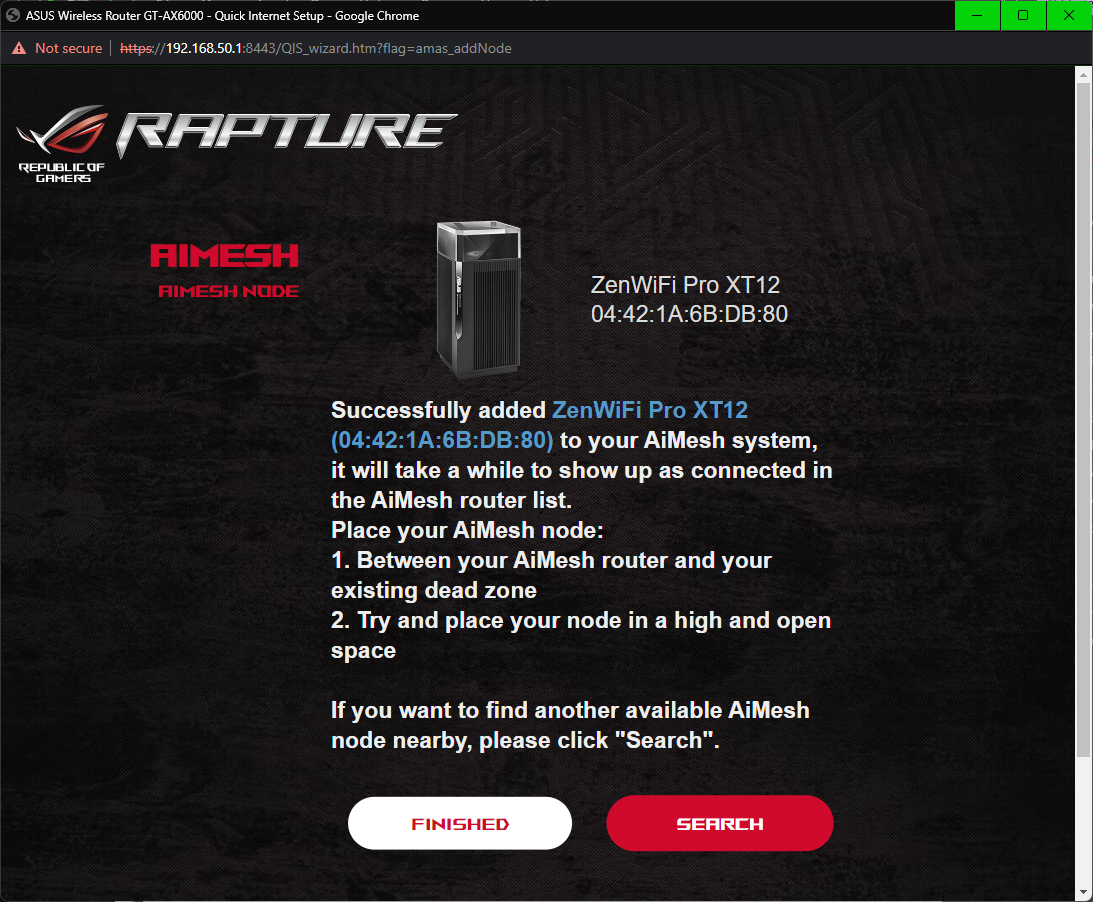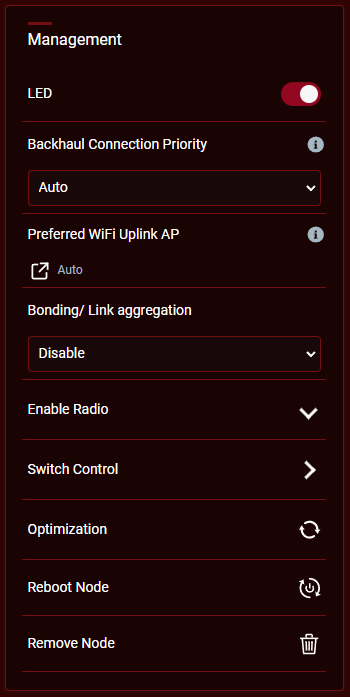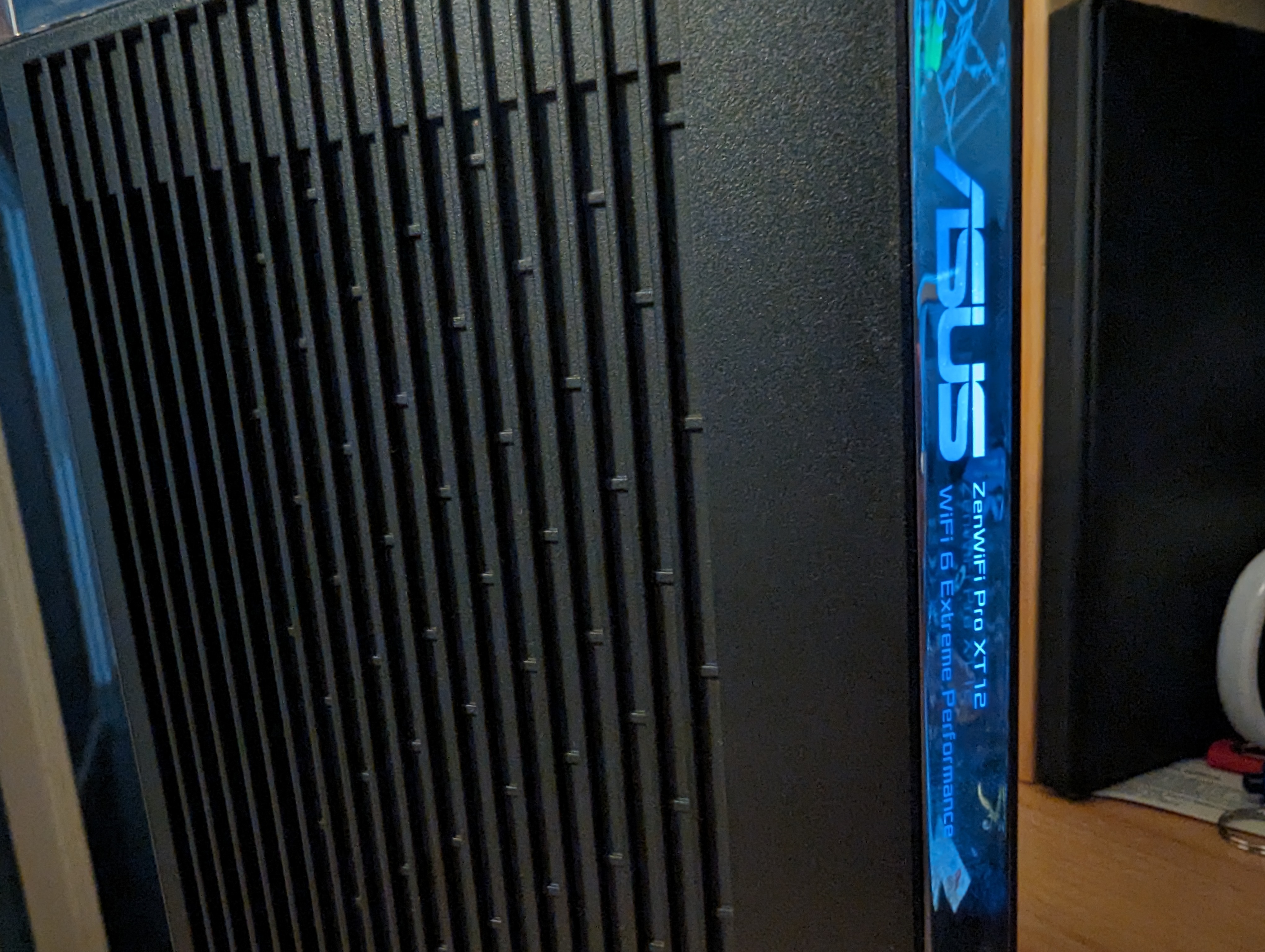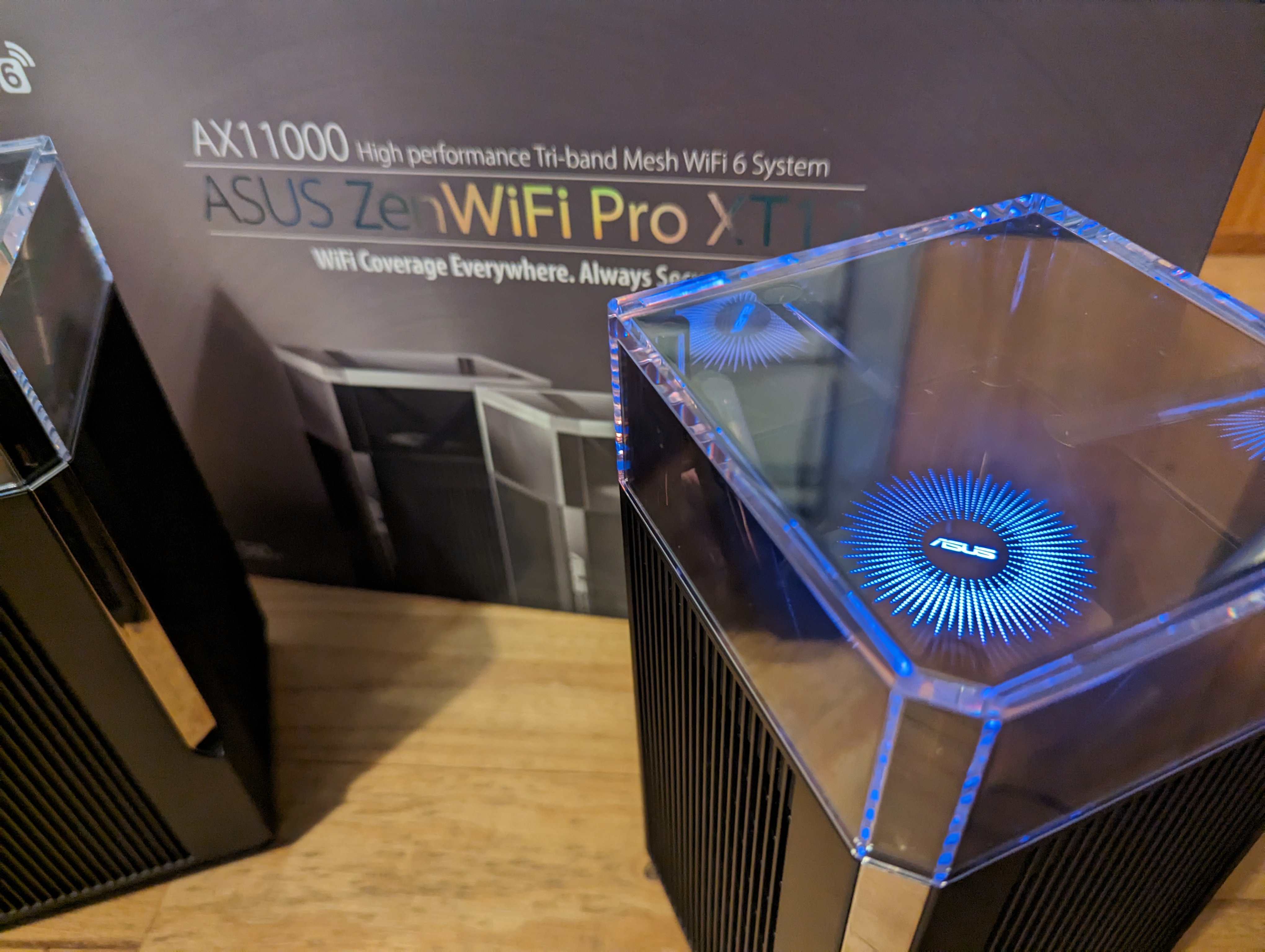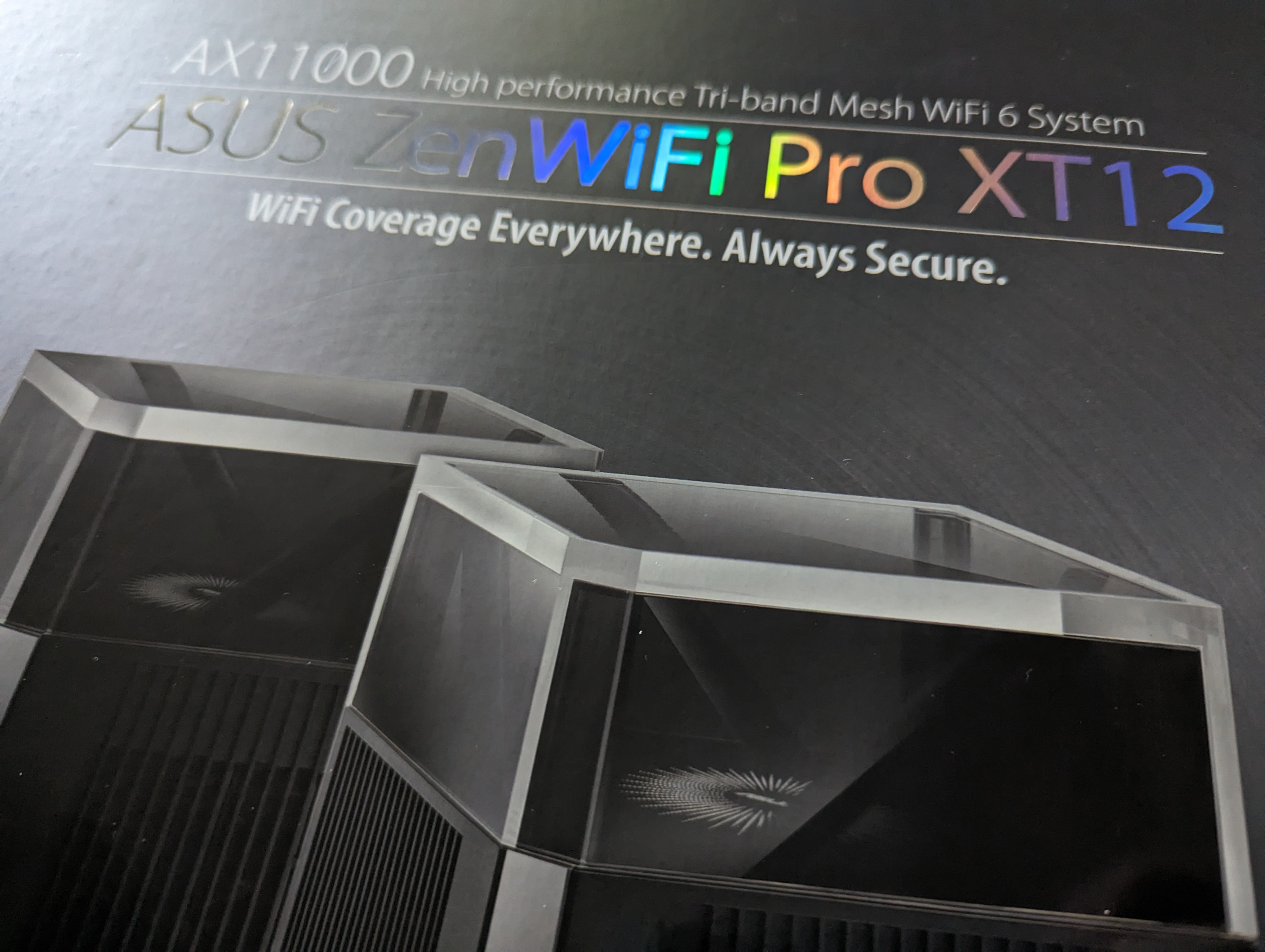Back in 2022, we reviewed the ROG Rapture GT-AX6000 router from Asus, and it’s an absolute beast of a setup. For many households, this will be more than sufficient for your needs. But what about households that need lots of power and big range too?
Well, Asus has an answer to that with the ZenWiFi Pro XT12, a Wi-Fi 6 Mesh system that can stand alone or integrate into Asus AI Mesh, which is how we’ve primarily reviewed the hardware: pairing it with the ROG Rapture GT-AX6000.
What is it?
It’s a dual-node offering that has a huge capacity to extend your Wi-Fi range and ensure that you’ve got full coverage around your home. As a mesh system or stand-alone routing, the performance is impressive. The hardware looks impressive but is significant in size. This does work in favour of buyers as there are ten quality antennae transmitting efficiently to maximise coverage, as well as air channelled over heatsinks to keep your devices cool.
The two nodes measure 170 x 320 x 200mm and deliver connectivity via dual-band 2.4 GHz and 5 GHz connectivity. As is fair to expect, there is a dedicated backhaul between the nodes, which maximises both stability of the connection and speed delivery to users.
On the rear, you’ll find a 2.5Gb WAN port, a 2.5GB LAN and two 1Gb LAN ports (that can be aggregated), which made life lovely to connect my NAS and gaming computer.
Setup, Features and Performance
While the Rapture GT-AX6000 does a great job of providing coverage for my home devices, there are areas where the signal strength drops a bit. Adding in the XT12, two things were noticed immediately and continued throughout the testing:
- Weak signal areas now have full coverage, and the general range has been extended not just through the garden but part way down the street!
- Speed drop, even on the mesh, became non-existent
Before getting to this point, though, you need to unbox and set up the nodes. There are a couple of options here utilising a backhaul between the nodes (you can set which band you want to use) to maximise the wireless performance, automate it, or use Ethernet which works on auto mode.
The best one for continued performance is to use Ethernet. For me, following a significant upgrade to my home network, this was the choice I took for the majority of testing time. One node was in my comms rack, with the other by my desk, essentially creating a triangular mesh network covering my home when you include the existing router.
I was able to add the XT12 nodes to my network quickly and easily from within the Router interface. Whether you’re adding these to an existing network like mine or as a stand-alone router, you can do this in the app or via the internal web user interface. This is one area that makes me feel like the XT12 is a power user setup the app is very useful but simple in its feature presentation; specifically, some of the higher-end networking features are multiple layers deep in the menus.
Now, I didn’t have any specific performance issues with Wi-Fi, but adding the mesh into the setup improved not just speed but the signal strength in and — as earlier mentioned — around the house. I mentioned earlier the antennae in the system; these weren’t just improving signal but also allowing more concurrent connections, which improved the quality of service to all devices and allowed IoT devices to maintain a better connection.
There are plenty of features included that fall into the realm of business features. While they’re there and functional, they feel a little like an afterthought, focusing on power users versus a genuine business system.
What could be improved?
There are a few things we’ve already mentioned — nothing deal-breaking — that could be improved a bit here on the ZenWiFi Pro XT12. One that is going to resonate with a lot of you who’ve read this far is the price. $1,329.00 at the time of publishing this review; this is a really expensive Wi-Fi and routing system.
The app is really good but can be a little difficult to navigate if you’re making changes to some of the more complex network settings. Port forwarding, static routes and IP management are buried a bit too deep to be easily accessed. For this, go to the web interface, it’s far quicker and easier.
The nodes deliver an excellent signal quality; they’re pretty big, and while much of this is functional, some of that feels like it’s purely for looks. Combining a little more polish on the features and less focus on looks would result in an easier sell to business consumers.
Other included extras
The Asus routing platform has a number of included extras that will be useful to different users for different reasons. A couple I thought were particularly useful are:
- Solid VPN offerings, including my personal preference: OpenVPN
- The capability to run up to 12 SSIDs on separate VLANs and differing access levels to segregate users and your home network devices
- Compatibility with Google Assistant and Alexa to manage a number of router and network features
- AIProtection, which Trend Micro powers, offers IPS, Malware blocking and parental controls
There’s a lot to explore in the feature set to get the network set up to meet your needs.
The value proposition
The two-node kit is $1,199 across multiple retailers, with prices varying as high as $1,499.00, so it’s not just expensive; it’s a very expensive option for Mesh Wi-Fi and routing unless you need and will use many of those high-end features. The question then becomes, what does it offer to make this cost a good value offering?
Compared to other similar offerings, the XT12 has really impressive performance and a heap of features that put it well into the power user realm and bordering on the SOHO/SMB market needs. For the average home user though, while it’s nice to have more than you need, this is beyond overkill.
While it’s got plenty of high-end features, the setup is remarkably simple via whichever method you choose: App or web UI. Then, adding further nodes is simply a case of turning it on and following on-screen prompts.
The XT12 nodes are visually very — subjective, I know… — attractive and designed to be shown off. That physical size, though, also accommodates good physical connectivity, decent heatsinks to keep it cool and has more antennae than a lower budget offering, increasing the performance, reliability and range of the unit.
Reasons buy
The only real reasons not to buy are the feature set is almost what could be expected of a business-grade option and the price. No bones about it, This is a really expensive option and beyond the realistic budget most home users will be prepared to spend.
But if you don’t need the top-level features and the price isn’t a concern, you’ll get a lot for your money. You get good-looking hardware, great performance that is consistent and reliable, with features that any prosumer and many businesses will be happy with.
If its sounding like something you might like to grab, then there’s a heap of retailers both online and physical stores that stock Asus routing gear. Make sure you shop around though, because the prices vary quite a bit and many of the retail stores will price match if you’ve got proof of a better price.

